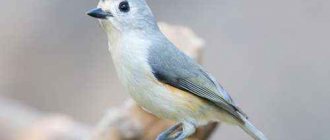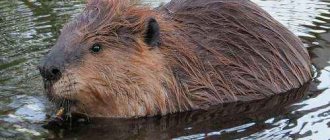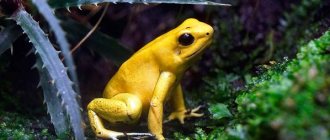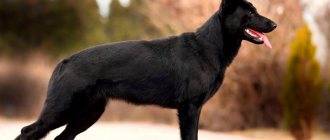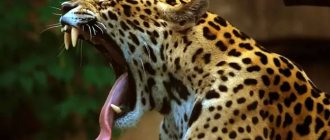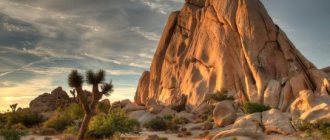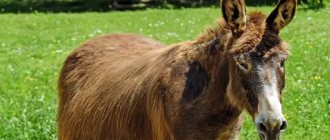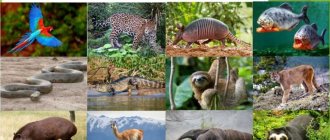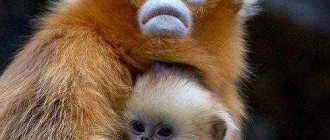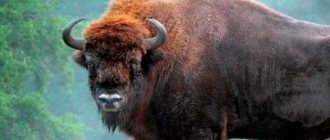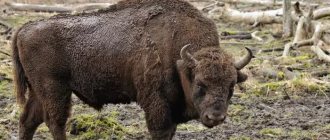Due to the climatic characteristics of this zone, various plants grow here, as well as interesting species of animals and insects.
↑ Features
Another characteristic factor of the nature of this continent is that it is washed by the Gulf Stream, and is also influenced from the north by the Alaskan Sea Current, and on the west coast by the Californian Current.
winter in North America photo
Due to the icy bays in the north of the continent, cold air masses spread across North America, but it is countered by the Gulf of Mexico, where the temperature does not drop below 25 degrees all year round.
Test on the topic
- /10
Question 1 of 10What climate zone is North America not in?
Start test
Hall of Fame
To get here, take the test.
- Artem Alexandrov
10/10
- Christine Hamato
10/10
- Denis Khristoforov
10/10
↑ Animals of North America
In each climate zone of North America you can find animals characteristic of that zone. Therefore, the north is home to polar bears, and reindeer also live in the tundra. The taiga is inhabited by representatives of the mustelid family (weasel, marten, mink), a group of rodents, as well as predators: brown bears, wolves, lynx.
wolverine photo
The steppe zone is inhabited by bison and pronghorn antelope. The inhabitants of the forests of North America are similar to the inhabitants of the forested territories of Eurasia (fox, wolf, ferret, grizzly bear, etc.). The forest-steppe is inhabited by bison, coyotes, and pronghorn. The south of the continent boasts rattlesnakes and even crocodiles.
Taiga
The taiga zone is located in two climatic zones: subarctic and temperate. The soils of the taiga are brown forest and soddy-podzolic. The Pacific taiga belongs to the oceanic coniferous massifs. The flora is represented by white and black spruce, pines, balsam firs, larches, thujas and hemlock. Among the main representatives of the animal world are black grizzly bears, martens, Canadian lynxes, skunks, moose, and bison.
Grizzly bear
↑ Plants of North America
The flora of the continent changes dramatically if you look at it from north to south. The closer to the North Pole, the less vegetation: from bare areas, through mosses, dwarf trees of the tundra, then through coniferous trees of the taiga, a huge area of deciduous forests (this is where the famous Canadian sugar maple grows), throughout the steppe zone a variety of steppe grass, followed what the desert lands are after.
sugar maple photo
- Tundra - mosses, lichen, dwarf shrubs, creeping heather;
- Taiga - fir, sequoia, Weymouth pine, Douglas fir;
- Deciduous forests - oak (black and white), beech, sugar maple, birch;
- Forest-steppe - black walnut, chestnut, feather grass, cacti;
- Mountains - sequoia, montezuma pine, etc.;
- Evergreen forests - cypress, palm trees, oak, etc.
Arctic deserts
The territory with arctic deserts is located in the arctic climate zone. It occupies the islands of the Canadian Arctic Archipelago and a large area of Greenland. Arctic deserts are characterized by harsh weather conditions: strong gusty winds, precipitation from 100 to 250 millimeters per year, long polar winters and air temperatures during the cold period down to -40 degrees Celsius. During the hottest periods, the temperature rises just above 0 degrees Celsius. The soils are desert and rocky.
The flora of the Arctic deserts is teeming with a large number of mosses and lichens. The fauna is represented by a variety of seals, walruses, polar bears, musk oxen, polar wolves, foxes and lemmings.
Polar bear
Muskox
polar Wolf
↑ Lakes and rivers of North America
In North America, a major river system is a branch of the world's largest river, the Mississippi River. In addition to it, the continent also contains rivers such as the Mackenzie, Colorado and Columbia. Due to their flow, which goes from north to south, these rivers have high speed and, consequently, large energy reserves.
Niagara Falls photo
Among the mainland's largest lakes, the Great Lakes of Ontario should be highlighted. We should also highlight the famous Niagara Falls. Nature Reserves North America is rich in unique national parks and nature reserves. The most popular and famous are Yellowstone, which is also the oldest park in the United States, Chaco National Park, Denali and Big Bend.
American alligator
Not as dangerous as their reptile reputation, but still common enough in the southeastern United States to puzzle locals. Some adult alligators can reach lengths of more than 15 feet and weights of about 1,000 pounds, but most are much more modest in size, even given the tendency of Florida residents to greatly exaggerate the size of alligators when calling 911.
The habit of individual citizens feeding American alligators is not the best activity that accustoms animals to contact with people, and as a result can result in death.
↑ Attractions of North America
On the mainland of North America, the most popular attractions are located in the USA. Tourists enjoy visiting the Grand Canyon, and man-made attractions include the Statue of Liberty, the Golden Gate Bridge, as well as Broadway and Times Square, and in Mexico, Tenochtitlan, an ancient city-state once inhabited by the Aztecs.
Tenochtitlan photo
Prairies
This is the name given to the vast spaces that occupy the entire central part of the continent. The nature of North America has changed greatly due to human influence, and prairies in their original form are now found only in small areas. The rest of the land is plowed, artificially irrigated, crossed by power lines and a network of roads. There are farms along the rivers in the water meadows. Many North American plants and animals once found here have now disappeared or declined sharply.
It can be quite cold on the prairies in winter: snow falls and the winds are fierce. With the arrival of spring, severe floods are possible. The best time here is the first month of summer, when everything smells fragrant and blooms. In August, drought sets in and fires often occur. And yet, the corners of the prairies that remain untouched are considered by Americans to be a land of unsurpassed beauty. Tourists love these places no less than sea coasts and forest parks.
↑ Interesting facts
- The continent is washed simultaneously by three oceans.
- The corn harvest on this continent is so high that it covers 50% of the world's harvest.
- North America is prone to frequent earthquakes caused by the collision of large tectonic plates.
- Scientists have counted 965 different species of fauna on the territory of this continent.
- Two developed civilizations lived in North America and then disappeared without a trace - the Mayans and the Aztecs.
Sandy coasts
In the northeast of the mainland, from Nantucket Island to Florida and around the Gulf of Mexico, there is a coastal strip with many sand dunes. In some places, pine trees, ragworts, and rose hips grow on the dunes. There are a lot of birds here: mockingbirds, blackbirds, blue herons, woodpeckers, red-winged swamp birds, buntings, cormorants, gulls, ducks. Birds feed on sea creatures: fish, crabs, horseshoe crabs, etc.
Insects
North America belongs to the category of continents that are unique in their climatic and landscape characteristics. The insects inhabiting these territories are very diverse, and their activity occurs both during the daytime and at night.
Apollo Phoebus
A butterfly similar in appearance to Parnassius apollo. The insect is medium in size and has cream-colored wings. On the general white background of the wing there is light pollination by not too dark scales. A distinctive species feature is represented by black and white antennae and a pair of red spots with a black border on the hind wings.
Hessian fly
The dangerous cereal pest has the body shape of a mosquito and short antennae. The wings of the dipterous insect are gray-smoky, with a pair of longitudinal veins, one of which bifurcates in the middle. The legs are thin and long, reddish in color. The abdomen is relatively narrow, with a characteristic point.
Dirty predator
The bug of the Predator family is distinguished by its large size. The insect is characterized by a brown or almost black body color and reddish legs. The head is small in size, has fairly large eyes and a relatively long proboscis. The antennae are long, covered with fine hairy bristles.
Jaundice Meadi
A diurnal butterfly from the white butterfly family with a golden-orange background color on the wings of males and a lilac-pink fringe. The border on the outer edge of the wings is dark brown. At the top of the central cell of the wings there is an oblong black spot, and on the underside of the hind wings there is a discal spot without a blurred border.
Rapeseed flower beetle
A representative of the beetle species of the subfamily Meligethinae. The insect is distinguished by its black coloration with the presence of a bluish or greenish tint characteristic of the species. This beetle overwinters on the soil, under the remains of plants. Adults damage the stigmas and stamens of vegetation.
Black dragonfly
A representative of the genus Sympetrum with a prothorax with a large, almost vertical protrusion, which bears a fringe in the form of long hairs. On the side seams there are black stripes bordering three yellow spots and merging into one fairly wide stripe. The legs are completely black or with numerous black stripes.
Sailboat cresfontes
One of the largest North American butterflies of the family Papilionidae. The undersurface of the black wings is distinguished by the presence of a very noticeable diagonal stripe of yellow edged on the edges of the hind wings. The ventral surface of the wings is predominantly yellow.
Ocellated click beetle
An insect with an elongated and flattened body shape. On the pronotum of the ocellated click beetle there is a pair of black spots in the shape of eyes, occupying a third of the total area of the entire upper part. The black spots have a white border, which makes them look like eyes and allows the insect to escape from some predators.
Cactus moth
A lepidopteran insect from the Ognevka family settles on prickly pear cacti, which it feeds on, very effectively limiting the total number of such vegetation. The small butterfly is brownish-gray in color and has long legs and antennae. On the front wings there is a pattern in the form of characteristic stripes, and the hind wings are white.
Return to content
Characteristics of the steppe zone
This area is characterized by high average temperatures in summer (22-24°C) and fairly low temperatures in winter (from -4°C to -12°C). The average annual temperature is 5.5°C. Up to 400 mm of precipitation falls annually, and droughts are frequent in summer. The climate varies from temperate continental to sharply continental.
To find out what the steppe looks like during the period of wild flowering, you need to visit it in early spring. At this time, the entire space is covered with a multi-colored carpet of tulips, hyacinths, irises, and poppies. The colorful splendor will last until early summer, when the dry season begins.
The entire steppe zone is conventionally divided into several subgroups depending on the type of vegetation.
There are three subzones:
- meadow,
- cereals,
- southern wormwood-cereals.
The steppe fauna has undergone significant changes over the last century. The reason for this is intensive human economic activity. Some representatives of the animal world have disappeared forever. Bison is a rare animal of the North American prairies, which was almost completely exterminated. Now he is under the protection of the law.
The most common inhabitant of the steppe is the rodent (ground squirrel, jerboa, vole, hamster). Various species of antelope, roe deer, wild horses, and numerous reptiles live here.
Dense grasses are home to many insects that provide food for birds. The most commonly seen bird is the lark. Bustards, eagles, partridges, and cranes are common in the steppe regions. In terms of diversity of species, the fauna of the steppes is very similar to the fauna of semi-deserts and deserts.
Steppe soils have high fertility. In the driest zones they are often saline. In the steppes of temperate latitudes, the soil has the highest percentage of humus content.
Location
In different parts of the world, steppe territories have their own names.
Depending on their geographical location they are called:
- prairies - North America,
- pampas - South America,
- Llanos - tropics,
- savannas - Africa and Australia,
- Tussoki - New Zealand.
The prairies stretch parallel to the Rocky Mountains, from Colorado to Canada.
The Pampas run from Buenos Aires to the center of the South American continent. They are also located in the Parana basin and extend to the mouth of the Rio Negro River.
Llanos are found in Venezuela and the southern regions of the United States.
Savannah is the most characteristic landscape for Africa, occupying most of the continent.
The vast Australian savannas occupy almost the entire north of the continent.
In the space of Eurasia, steppe zones stretch from Hungary to Western Siberia and Kazakhstan. There are these areas in Mongolia, Transbaikalia, in the Tien Shan mountains, Siberia, Central Asia, and Kashgaria.
Types of steppes on the territory of the Russian Federation:
- meadow,
- saline,
- typical,
- dry,
- shrubby.
The Russian Federation has vast steppe expanses that stretch from the Black Sea coast to Altai. In the southern region they extend to the Caucasus Range. Part of the biome is located within the East European Plain, the other is on the West Siberian Plain.
